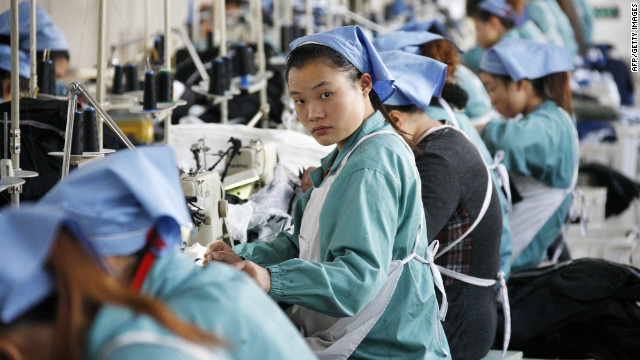|
Xiao Li, 23, a salesperson at an Adidas outlet in Chaoyang District, Beijing, is enjoying her new leisure time but worried about when the situation could change for the worse. "Recently, a shoe inventory of 17 pairs needed at least two months to be sold, if we were lucky enough," she said. But she added there is little opportunity to offer discounts without the brand holder's permission. "They need to preserve the brand's image and fame," Xiao said. "In China, the company continued to experience higher than usual inventory levels caused by over-optimistic sales forecasts made prior to the Beijing Olympic Games," said Li Ling, public relations manager for Adidas China. But the company is confident inventories will be back to normal levels by the end of the second quarter of 2010, she added. Adidas suffered a record decline in global sales in the third quarter, with its Asian business sliding relentlessly as inventories remained high and retailers demonstrated a lack of confidence in the company's products. Sales decline In the first nine months of 2009, sales for the Adidas Group in Asia decreased 9 percent, mainly as a result of declines in Japan and China, and only slightly better than the company's 11 percent slump in sales in North America. The company declined to discuss the country-by-country financial figures for Asia. "The forecasts in 2008 were a major factor. The loss of control of their franchises is another big problem for the company's business management," said Zhang Qing, CEO of Key Solution, a leading Chinese sports consulting firm in Beijing. Since last year, the main retail agents of Adidas China have closed around 100 outlets nationwide. Belle Group, the biggest sales agent for Adidas China, closed about 50 Adidas outlets, while Daphne shut down 20 to 30 franchise shops. "When faced with challenges, franchisers often act in their own interests. As a multinational company, Adidas relies heavily on big franchises, while domestic counterparts such as Li Ning and Anta always maintain tight control over their outlets," Zhang added. A management drain also had an effect on the sporting goods giant. During the second half of 2008, Zheng Jie, general manager of Reebok China, a division of Adidas Group, took the position of executive vice president of China's well-known brand Anta. A senior sales executive of Adidas China also jumped ship to Anta to take the role of sales director this year, according to China Business News. Li said that, despite the gloomy situation, China continues to be a highly attractive, long-term market for Adidas Group. "We see long term potential based on the increasing sports participation and style consciousness of consumers and also an expansion into lower-tier cities." Li said. "We expect franchise store numbers to increase. Meanwhile, retail remains an important part of our China strategy. In the years to come, we will further optimize and expand our portfolio of controlled space throughout China," Li said. During the third quarter of 2009, Adidas Group sales declined 7 percent to 2.89 billion euros (29.5 billion yuan) on a currency-neutral basis, creating a record of consecutive negative growth for the first three quarters. Gross profits decreased by 3.7 percent. Revenues for the Adidas segment decreased 6 percent, while the Reebok segment decreased 12 percent against the previous year. Third-quarter revenues for the Taylor-Made Adidas golf segment decreased 12 percent on a currency-neutral basis. "This was mainly due to the challenging macroeconomic environment and the non-recurrence of sales related to several new product launches in the prior year period," wrote the company in its third quarter report. Meanwhile, the company experienced a decrease in inventories of 8 percent and in net borrowing of 12 percent, compared with the previous year. Herbert Hainer, global CEO of Adidas, admitted consumer and retailer sentiment still hovered between fear and optimism for the group, but said he was cautiously optimistic about the situation in 2010 in light of the forthcoming FIFA World Cup, tighter control of inventories, a better financial position and a leaner organization. "World Cup events usually provide a great harvest for Adidas historically," Zhang said. |
||||
Struggling Adidas sees long-term growth ahead
Updated: 2009-12-1 Source: China Daily

Recommended News
Photo Gallery
Most Popular




